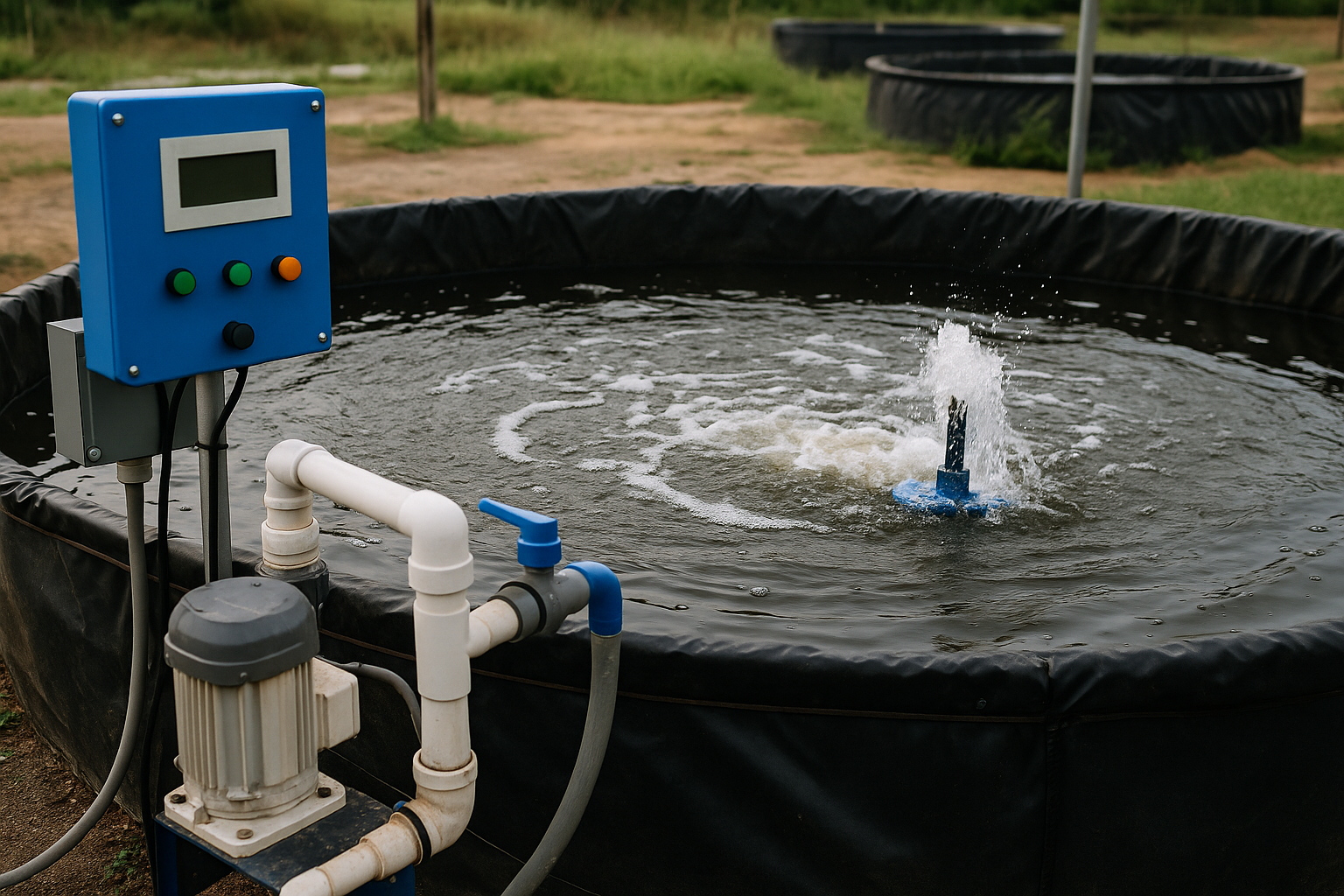How AI-driven biofloc technology is reshaping aquaculture efficiency
IoT-based sensors, when deployed within biofloc tanks, can continuously track critical parameters such as dissolved oxygen (DO), pH, temperature, and ammonia levels. Real-time data is then transmitted to AI-driven systems that analyze patterns and predict deviations before they pose a threat. This predictive capability is critical for preventing fish mortality, particularly in densely stocked tanks where a slight imbalance can lead to significant loss.

With aquaculture expanding rapidly to meet growing global seafood demand, sustainability has emerged as a key concern. A new review sheds light on the potential of artificial intelligence (AI) and Internet of Things (IoT) in sustainably transforming aquaculture through smart biofloc systems. Published in Processes, the study “Smart Biofloc Systems: Leveraging Artificial Intelligence (AI) and Internet of Things (IoT) for Sustainable Aquaculture Practices” provides a comprehensive assessment of how data-driven solutions are addressing long-standing challenges in fish farming.
The biofloc technology (BFT), which promotes microbial recycling of waste into useful biomass, has shown great promise in enhancing water quality and reducing feed dependence. However, its sensitivity to water fluctuations has traditionally limited its scalability. The new study argues that integrating AI and IoT can overcome these limitations by automating monitoring, improving efficiency, and enhancing resilience against environmental variability.
How can AI and IoT address the limitations of traditional biofloc systems?
The review identifies the main constraints of traditional BFT systems, unpredictable water quality, manual monitoring, and vulnerability to sudden environmental shifts. AI and IoT, the authors contend, are poised to solve these issues by bringing precision and automation to aquaculture operations.
IoT-based sensors, when deployed within biofloc tanks, can continuously track critical parameters such as dissolved oxygen (DO), pH, temperature, and ammonia levels. Real-time data is then transmitted to AI-driven systems that analyze patterns and predict deviations before they pose a threat. This predictive capability is critical for preventing fish mortality, particularly in densely stocked tanks where a slight imbalance can lead to significant loss.
The study outlines how various machine learning algorithms, such as Long Short-Term Memory (LSTM), Random Forest, and Support Vector Machines (SVM), are being used to forecast DO levels, detect disease onset, and automate feeding. These models have demonstrated high predictive accuracy and adaptability, enabling farmers to fine-tune system operations in response to changing biological and environmental conditions.
Smart biofloc systems also utilize AI to dynamically regulate aeration, feeding schedules, and water circulation, removing the need for manual intervention. These automated decision-support systems can help prevent overfeeding, a major contributor to pollution and economic loss, and ensure optimal energy use in aeration.
What measurable impacts do smart biofloc systems have on productivity and the environment?
The economic and environmental benefits of AI- and IoT-integrated biofloc systems are clearly defined in the study. Cost reductions stem from improved feed conversion ratios, minimized labor costs, and reduced water usage. Case studies referenced in the research indicate that smart feeding systems can cut feed waste by up to 21%, while predictive water quality monitoring reduces disease-related losses significantly.
In terms of productivity, real-time environmental regulation enables consistent growth conditions, leading to increased stocking densities and better survival rates. For example, in shrimp and tilapia farming, the integration of AI algorithms into feeding and water management has resulted in higher yields and reduced mortality.
Environmental sustainability is another core advantage. Traditional aquaculture often leads to excess nutrient discharge, contributing to water pollution and ecological degradation. BFT mitigates this by converting waste into microbial protein, and when enhanced with smart systems, it requires near-zero water exchange. This significantly cuts nutrient runoff, energy consumption, and carbon emissions.
In addition to local impact, the study cites how companies such as Indonesia’s eFishery and Vietnam’s Fishwell are pioneering commercial applications of smart BFT. Their cloud-based platforms leverage AI to manage feed and monitor water quality, demonstrating scalability and replicability in real-world conditions. These implementations underscore the practical feasibility of the reviewed technologies.
What are the technological and operational barriers to adoption?
Despite the promising findings, the study acknowledges several barriers to widespread adoption, especially for small- and medium-scale producers. High initial costs for sensor networks, computational infrastructure, and AI software remain a deterrent. Additionally, farms located in remote areas often lack the internet connectivity required for seamless real-time data transmission.
Data quality and management are also critical issues. Sensor fouling, environmental interference, and lack of standardized data formats can impair predictive accuracy. The researchers stress the importance of robust validation, interpretability, and uncertainty quantification in AI models to ensure trustworthiness and resilience.
Technical literacy poses another hurdle. Successful implementation requires training aquaculture personnel to operate, interpret, and maintain smart systems. The study suggests that user-friendly interfaces and decision-support tools could help bridge this digital divide.
To guide practical deployment, the researchers propose a technical feasibility matrix. This framework categorizes AI applications by their complexity, from basic threshold-alert systems that can run on low-cost edge devices, to advanced deep learning models that require cloud-based infrastructure. The study highlights that for smaller farms, starting with simple systems may offer a cost-effective entry point, while larger operations may benefit from full automation using advanced AI, including models like YOLOv8 for disease detection.
What does the future hold for smart aquaculture?
Going ahead, emerging innovations such as Digital Twin technologies, blockchain for data transparency, and adaptive AI systems that evolve with operational data are poised to enhance efficiency and trust.
The authors also advocate for human-in-the-loop systems, especially in critical functions like disease detection, where automated decisions can have significant biological and economic consequences. Interpretability tools such as SHAP and LIME are identified as essential for making complex AI models transparent and reliable.
- FIRST PUBLISHED IN:
- Devdiscourse










